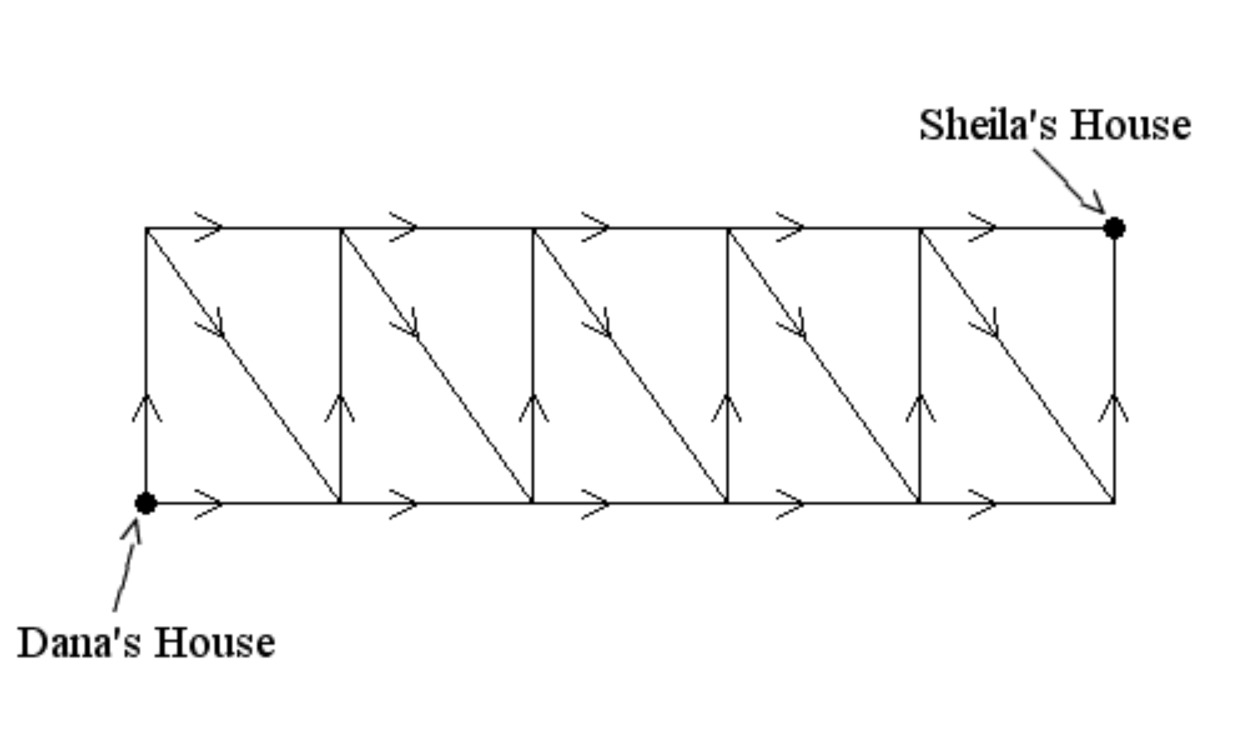In a roomful of businesspeople, everyone wants to network with the others in the room. To achieve this, each person shakes hands with every other person in the room. If there are $n$ people in the room, then, in terms of $n$, how many handshakes will occur?
When you solved this problem, you may have used the strategy of change or simplify the problem, trying the problem with four or five businesspeople and noticing the pattern. However you solved it, in order to generalize to $n$ people, you had to describe, if only to yourself, a process by which you could count the number of handshakes. If you discussed this problem in class, you probably found yourself having to put this process into words very clearly, so that someone else following your process would also arrive at the correct answer: $(n - 1) + (n - 2) + (n - 3) \ldots + 1$.
In mathematics, taking the time to describe something — a procedure, a set of data, an image, or a definition — can give you a deeper insight into the nature of the problem. The focus in this lesson will first be on writing thorough descriptions. In later problems, you will find that coming up with a complete description of a method for tackling the problem will be of use in solving it and other problems like it — as was the case with Problem 1.
Without looking up what a pentagon is, explain to a 5th grader how to tell if a shape is a pentagon. Remember that it might not even be a polygon. You can assume, however, that the shape is something that can be drawn with pencil and paper.
When you describe something, in order for your description to be as insightful as possible, you should have the following goals in mind:
Your description should be complete, addressing all possibilities that could arise. In the problem above, did you take into account the fact that the shape might have curved lines? That it might have lines intersecting each other? Or even multiple lines intersecting at the same point as in the letter “K”.
Your description should be understandable (to the intended reader). For example, you would be correct if you gave Wikipedia’s definition of a pentagon, “a five-sided polygon,” but this doesn’t do any good if the fifth grader doesn’t know what a polygon is.
Your description should be unambiguous. This means that your description should be completely clear, and not open to any different interpretations. You should ask yourself, “Would it be possible for the reader to read my description carefully, but misunderstand what I mean?” For example, if you said “a pentagon must have five sides,” would someone reading the description think that this meant “exactly five sides” or “at least five sides”? If you think there is any possibility that your language might be misinterpreted, you should be more specific.
Try this next exercise to practice writing a thorough description:
The shapes below are some possible ways that the reader could draw an “r” incorrectly – make sure your description from the previous problem is clear enough that none of these mistakes could occur, and edit it if necessary.

If you thought that the task of describing how to draw an r was a little bit silly, you’re right. Everyone in your class knows how to draw an r, and children who don’t know how to make an r are taught by example, not by description. Likewise, the chances are slim of your running into someone without a layperson’s understanding of speed.
On the other hand, the task of providing a basic description can be illuminating in its own right. It’s easy to believe that you understand what speed is, but when encouraged to define it for someone who doesn’t understand certain phrases, you’re likely to think more carefully about what speed actually is and therefore be able to use this understanding in future problems dealing with speed. Providing a careful description of something often helps you to understand it, bringing assumptions to light and revealing questions that you may not have known you had.
With a few exceptions, the next batch of problems does not require you to pretend you have an audience with gaping holes in their knowledge. Instead, the problems are opportunities for you to practice writing complete, understandable, unambiguous descriptions targeted at people with a mathematics background similar to your own. In Problems 9 and 10 in particular, working towards a description that covers all the cases will guide your investigation.
Targeting your explanations toward an audience of your peers will give you the chance to practice another virtue: making your descriptions concise. Charged with writing a complete description, people sometimes respond by using as many words as possible. But a beautiful description is thorough while at the same time using as few words as possible. Keep that in mind while working on the following problems.
$2x - 4y = 15$
$- 2x + 8y = - 1$
by adding the equations to each other in order to create a simpler equation that we could solve. Explain why we can solve the original system of equations by using this new, simpler equation in place of this system.
Make a table of values, then use it to graph the equation $y = |x|$.
Make a table of values, then use it to graph the equation $y = |x - 3|$.
Describe the graph of $y = |x - h|$ clearly enough that, once you tell someone a specific value of $h$, they could draw the graph accurately.
An equation of the form $y = {x^n}$ is called a power function. $y = {x^2}$ and $y = {x^3}$ are two simple examples, with $n = 2$ and $n = 3$. Use your calculator to graph some different power functions, making sure you have chosen a sensible window. Describe the effect of the different values of $n$ on the graph. Make sure you try values of $n$ that are negative, fractional, etc. Try to categorize all the different types of graphs you can get depending on what $n$ is.
Describe a circle to someone who’s never seen anything circular. You can either explain how to draw one, or define what it is.
Do this problem with a partner. First, draw a meaningless shape on a piece of paper — just doodle for a few seconds, and make it look fairly random, but not too complicated. Don’t let your partner see the shape.
Then, your partner should get a pen and paper, and you should describe what your shape looks like and have them try to draw it. Don’t look at what they’re drawing or make any gestures — just tell them what to do in words. At the end, look to see how accurately it turned out.
You should each be the “describer” twice. Try to make your second try more accurate based on what you learned from your first try.
There are even more benefits to providing a clear description! Not only can it help you convince others that your solution is correct, a clear, complete description can help you be sure that you haven’t overlooked anything in your solution to the problem. In addition, by doing problems such as the average speed or the four-people-in-a-line problem, you might have learned something deep about the nature of the concepts involved. Finally, you may find that, in providing a complete description of your solution to one problem, you may see a way to apply the solution to another problem.
In the final set of problems, the description will no longer be the task itself. Each of these problems requires you to come up with a clear solution method. The trick will be to come up with a plan for solving each problem, after which the solution becomes much easier. As you work the problems, imagine explaining your solution method to your classmates. This will not only help you be ready to convince your classmates that your solution works, it will make sure that you are really honest about following your method.
Don’t forget: after initially tinkering to get a feel for the problem, ask yourself, “what’s my plan?”
A merchant visited three state fairs. At the first, she doubled her money and spent \$150. At the second, she tripled her money and spent \$270. And, at the third, she quadrupled her money and spent \$360. The merchant found that she had \$240 at the end. How much money did she start with? Is there another solution?
Rihanna decides to give her three friends — Alicia, Jason, and Sali — some of her nickels that she brought to school. She gives Alicia half of her nickels plus one half of a nickel. Then she gives Jason half of her remaining nickels, plus half a nickel. Finally, she gives her last remaining nickel to Sali. How many nickels did Rihanna bring to school?
A book has been opened at random. What pages has it been opened to if the product of the facing pages is 298662?
A store was selling toothbrushes for 50¢ each. When the price was reduced, though not too much, the remaining stock sold for \$31.93. What was the reduced price?
What do you think is the next term in the sequence $1,4,6,26,158,4110$? Write a formula for the sequence using the ${T_n}$ notation you learned when studying sequences.
Examine the following sequence: 3, 6, 12, 24…
Find the likely next term, then write a formula for the $n$th term of the sequence.
Sequences that can be written in the form $T_n = T_1 \cdot r^{n-1}$ are called geometric sequences. Make up three more geometric sequences, with an eye toward teaching yourself what the effect of both ${T_1}$ and $r$ are on the sequence.
Do geometric sequences always get bigger and bigger as $n$ increases? If not, under what conditions do they get bigger and bigger, and what are the other possibilities?
Students in Mr. Willard’s P.E. class are spaced evenly around a circle and then told to count off beginning with 1. If student number 16 is directly opposite student number 47, then how many students are in Mr. Willard’s class?
How many different routes are there from Dana’s house to Sheila’s if their town was laid out as shown below. Dana can only move in the direction of the arrows.

Find a way to cut any parallelogram into pieces that can be arranged into a rectangle.
These dots are spaced one unit apart, measured horizontally and vertically. Find a way to draw a square with area exactly 10 square units, so that each vertex of the square is on a dot.
